When talking about the lizard family, it is impossible not to mention iguanas. Their sturdy body structure makes them unique among reptiles of the same species. Identifying one from a distance is easy because of the saggy skin around their throats.
If you prefer keeping a reptile as a pet, iguanas are a great choice. Wouldn’t it be nice to discover astonishing things about these magnificent creatures? Sit back to learn rare facts about the highly adaptive lizard of the American continent.
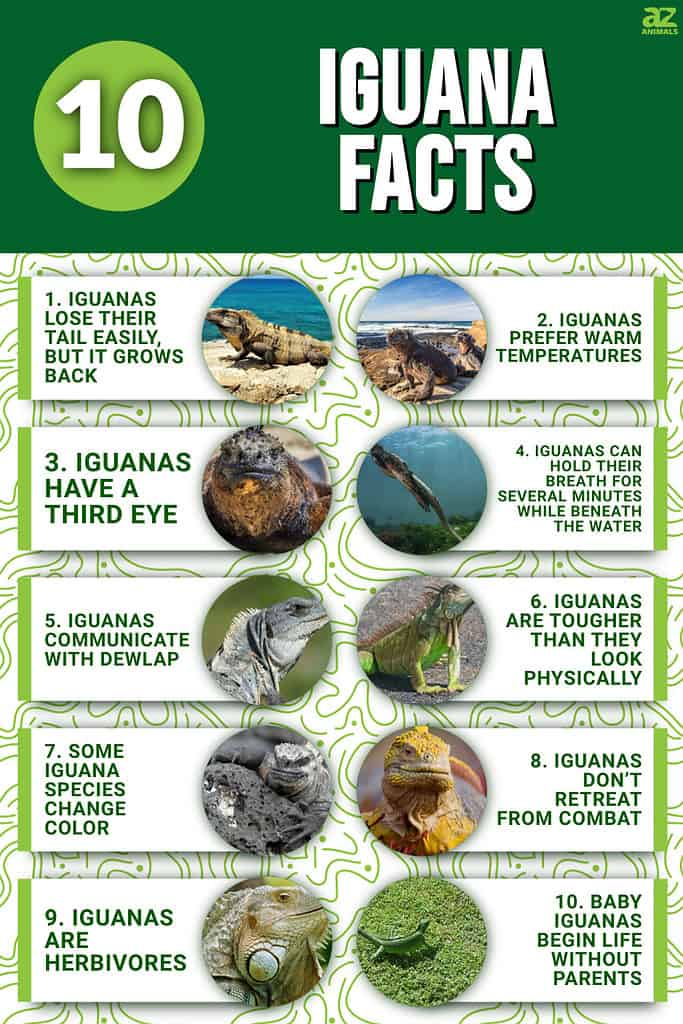
1. Iguanas lose their tail easily, but it grows back
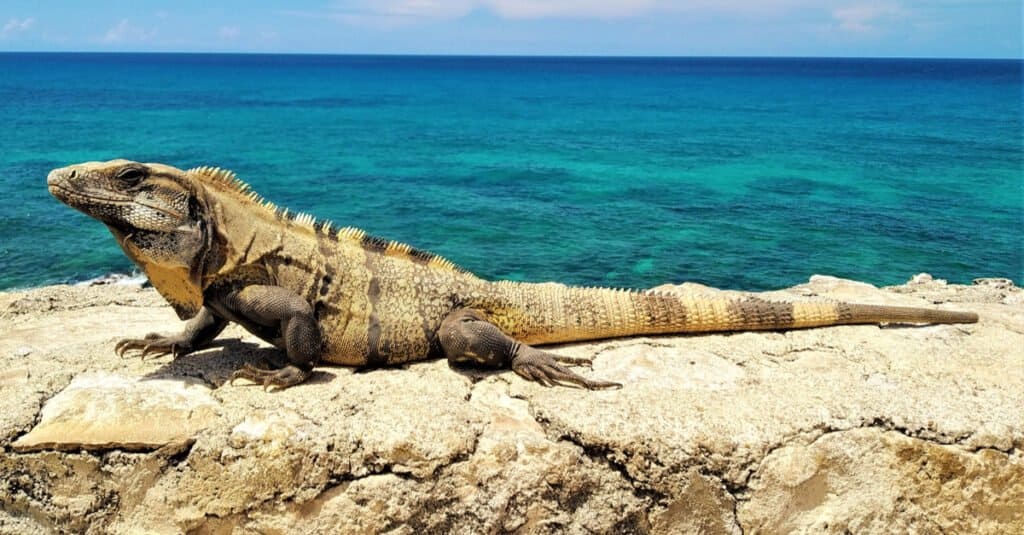
The iguana’s tail will grow back regardless of the number of times it gets trimmed.
©phortun/Shutterstock.com
Detaching their tails is an escape mechanism used by iguanas when attacked by predators. It will grow back regardless of the number of times it gets trimmed. However, it is usually relatively darker than what is lost, and its shape may differ completely. Occasionally, they result in losing their tail when scared.
Another thing that reduces the length of their tail is confinement. That is to say, keeping them in a small cage causes discomfort. So, their appendages may be cut short while moving around to get a suitable position. The best you can do when your pet experiences this is to take care of the wound.
2. Iguanas prefer warm temperatures

Keep your iguana warm if you want to keep it happy.
©Maridav/Shutterstock.com
Although they are adaptive animals, iguanas like basking in the sun, especially after eating, for digestion. Despite their love for hot zones, you may see them in the water and cold areas. That tells a lot about their flexibility and ability to adjust to whatever weather conditions they find themselves in.
Animal experts advise that iguana owners generate heat for their pets with ceramic and mercury vapor bulbs. This does not only maintain an ideal temperature range; it also generates UV light and heats when necessary.
3. Iguanas have a third eye
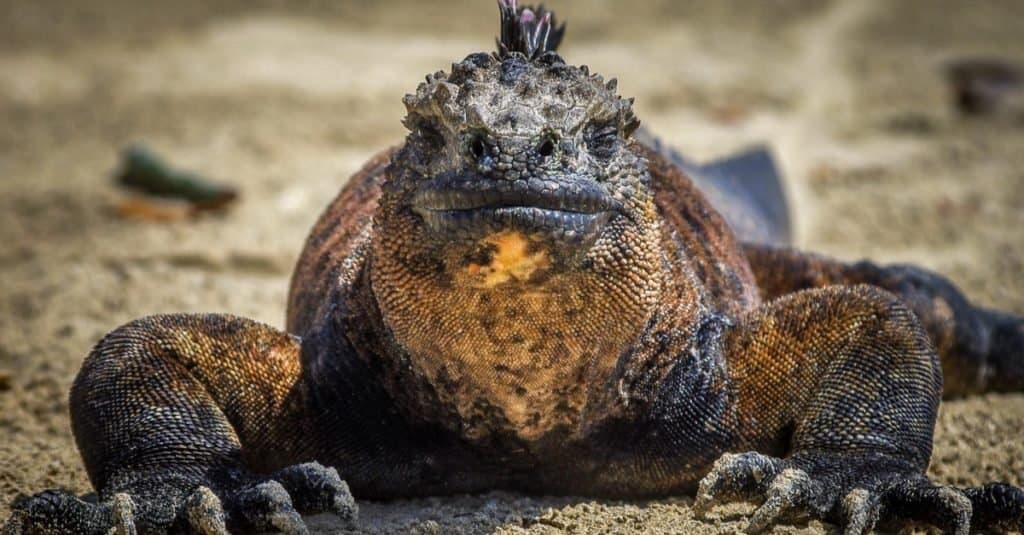
Iguanas have an additional eye apart from the visible two.
©Original Mostert/Shutterstock.com
Iguanas, like most lizards, have an additional eye apart from the visible two. If you watch closely, you will see it sitting on their heads. It’s in the form of a retina connected to the pineal gland in the brain. It serves a different purpose as opposed to recognizing objects. Even though they don’t use it to see, it is an integral part of their existence.
The third eye helps the magnificent lizard to control its sleep pattern. Additionally, it helps detect airborne predators and regulate body temperature. Their prominent eyes work exceptionally because it catches color and movement from several miles away.
4. Iguanas can hold their breath for several minutes while beneath the water
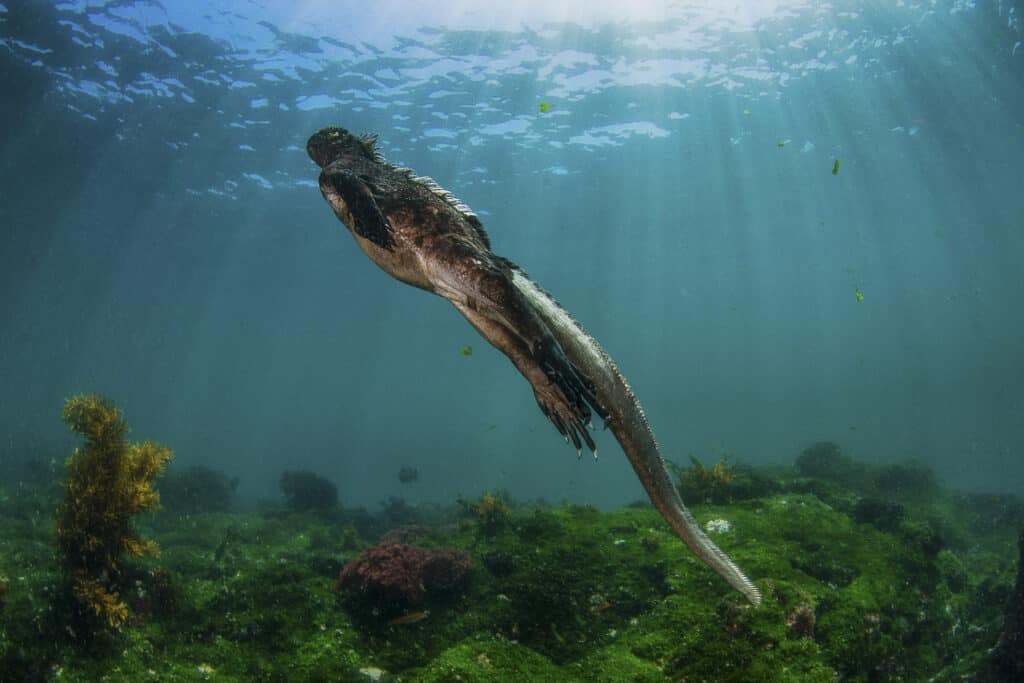
Galapagos Marine Iguanas are good swimmers.
©Andy Deitsch/Shutterstock.com
Irrespective of the species, iguanas can spend an average of 30 minutes underwater without breathing. It’s their unique ability, which other species cannot boast of when inside a pond or lake. Surprisingly, research has it that some iguanas can hold their breath for hours if the water is at a perfect current.
Some iguanas are good at gliding through the water. After going for a dip, they will return to warm up under the sun. According to experts, mature males can go as deep as 100 feet to feed on algae.
5. Iguanas communicate with dewlap
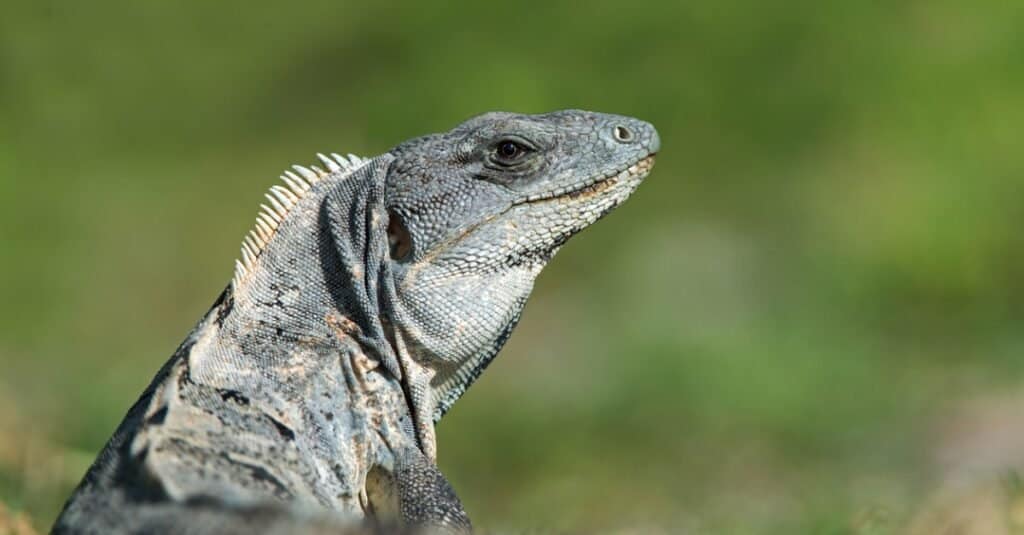
The dewlap is an effective adaptation that helps iguanas communicate.
©iStock.com/davemhuntphotography
Iguanas can’t utter a word but can say hello to each other using the dewlap, a flap of skin beneath their necks. They extend or move it to indicate their presence in a location when courting and displaying dominance. Sometimes, they nod their heads rapidly to tell other lizards that they are upset.
It is best to leave the iguana in isolation rather than move closer when aggressive like that. The lizard may feel threatened and use its tail to protect itself. Every movement has a meaning that others understand.
6. Iguanas are tougher than they look physically
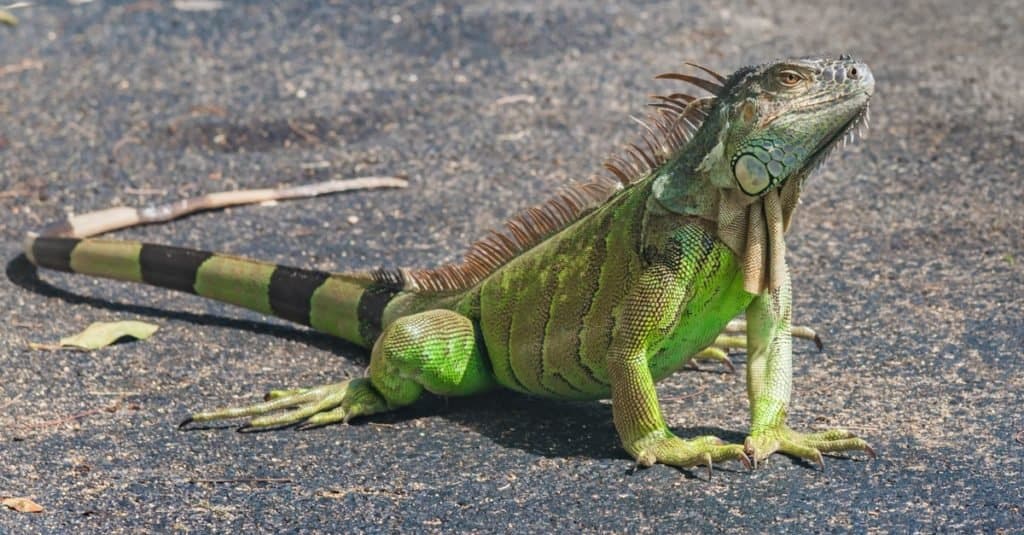
Iguanas have a bite force comparable with most carnivorous reptiles.
©David A Litman/Shutterstock.com
If your first impression about iguanas is that they are fragile, you are wrong. Because their tail falls off quickly does not mean that they are weak. Their bite force is comparable with most carnivorous reptiles. That aids in attacking prey and for quick digestion when they eat plants. Their skull widens to resist stronger forces.
Because their bones are strong, these reptiles can survive falling from 40 feet without getting hurt. That is how tough they can be when life throws itself at them. They are not walkovers for predators, as they will defend themselves with every weapon in their arsenal.
7. Some iguana species change color
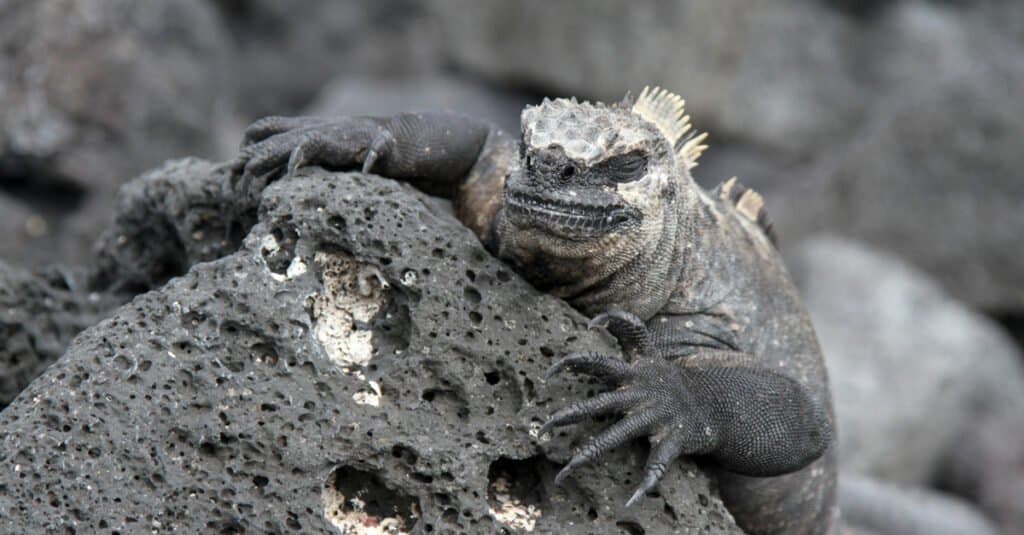
Blending into your surroundings is a wonderful adaptation.
©Anastasia Koro/Shutterstock.com
If you are familiar with iguanas, you can tell that most of them are green. It helps them to adjust to the plant environment perfectly. However, the species found in Fiji can change to black if in danger. That is to warn the predator because they won’t give in easily. The types in Fiji are uncommon and are fast going into extinction due to the predators.
However, it is important to mention that they don’t change color willingly. Some things that bring about disguising are health challenges, environment, and predators. If they are cold, their skins go darker.
8. Iguanas don’t retreat from combat
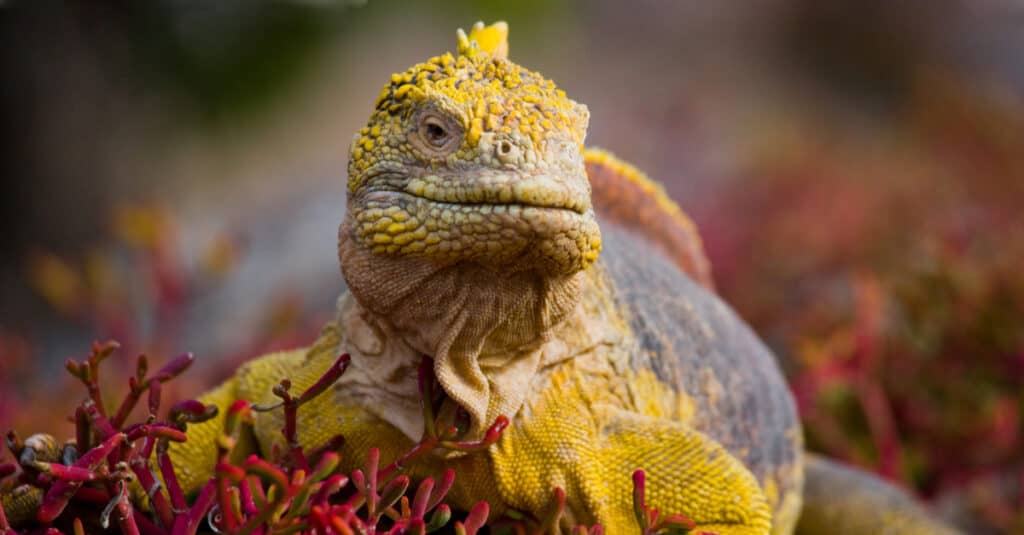
Iguanas do not tend to back down.
©GUDKOV ANDREY/Shutterstock.com
These lizards will not back down even when they are the weakest opponent. They give whatever it takes to protect themselves. It is amazing how an animal of their nature can believe so much in their ability. Their major weapon is their teeth and the tail used for biting and whipping attackers respectively when cornered.
It would be best not to provoke an iguana to avoid getting a taste of what iguanas can do when upset.
9. Iguanas are herbivores

Iguanas prefer to snack on flowers and leaves.
©Sanit Fuangnakhon/Shutterstock.com
Their appearance may make you think they are carnivores, but these wonderful animals prefer to snack on flowers and leaves. For example, algae are the preferred choice of marine iguanas. That is why they spend quality time underwater to scrap rocks for algae or seaweed.
Some species eat insects and other tiny animals when the opportunity presents itself. Unfortunately, it may have consequences for their health. Do you want your precious reptile friend to live longer? Feed it leaves and fruits.
10. Baby iguanas begin life without parents
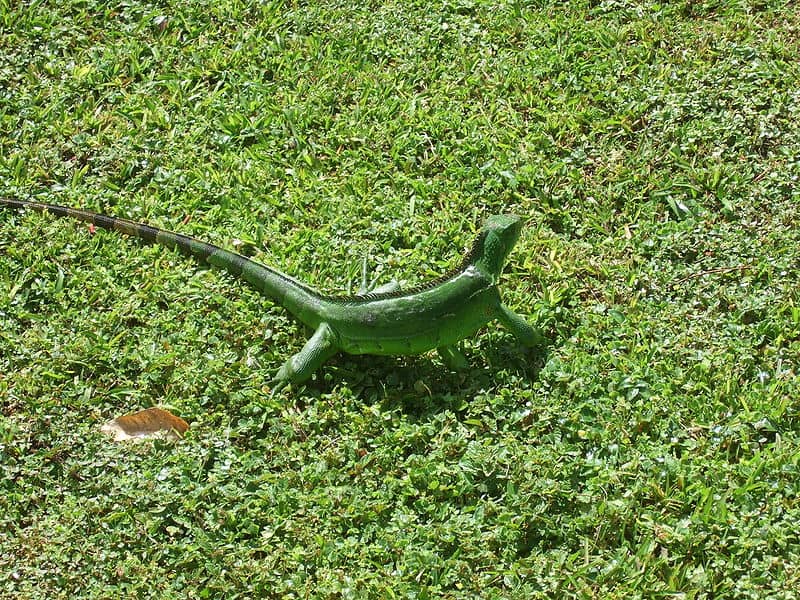
Mother iguanas will protect their eggs.
One of the most challenging introductions to life is not getting anyone to cater to you. That defines the beginning of most iguanas. That is why they keep reducing in numbers despite the number of eggs laid by one mother. For example, green iguanas lay as many as 50 eggs.
That sounds like something huge, but after hatching, only a few make it to adulthood due to predators. Even though the mothers don’t care for their offspring, they protect the eggs from attack.
The photo featured at the top of this post is © iStock.com/Chepko
Thank you for reading! Have some feedback for us? Contact the AZ Animals editorial team.






